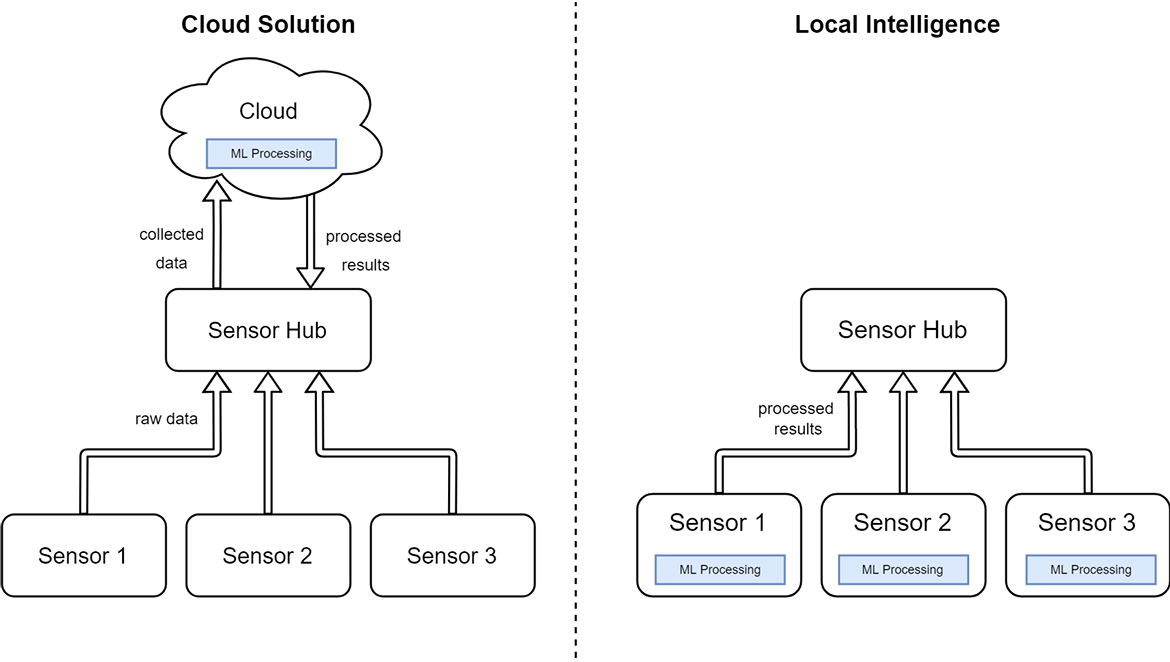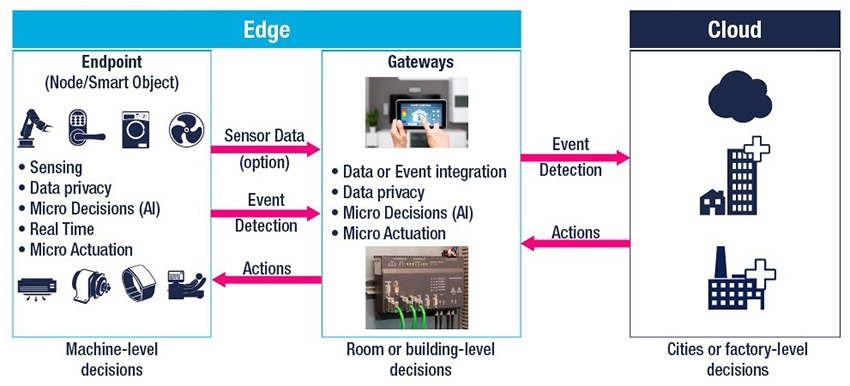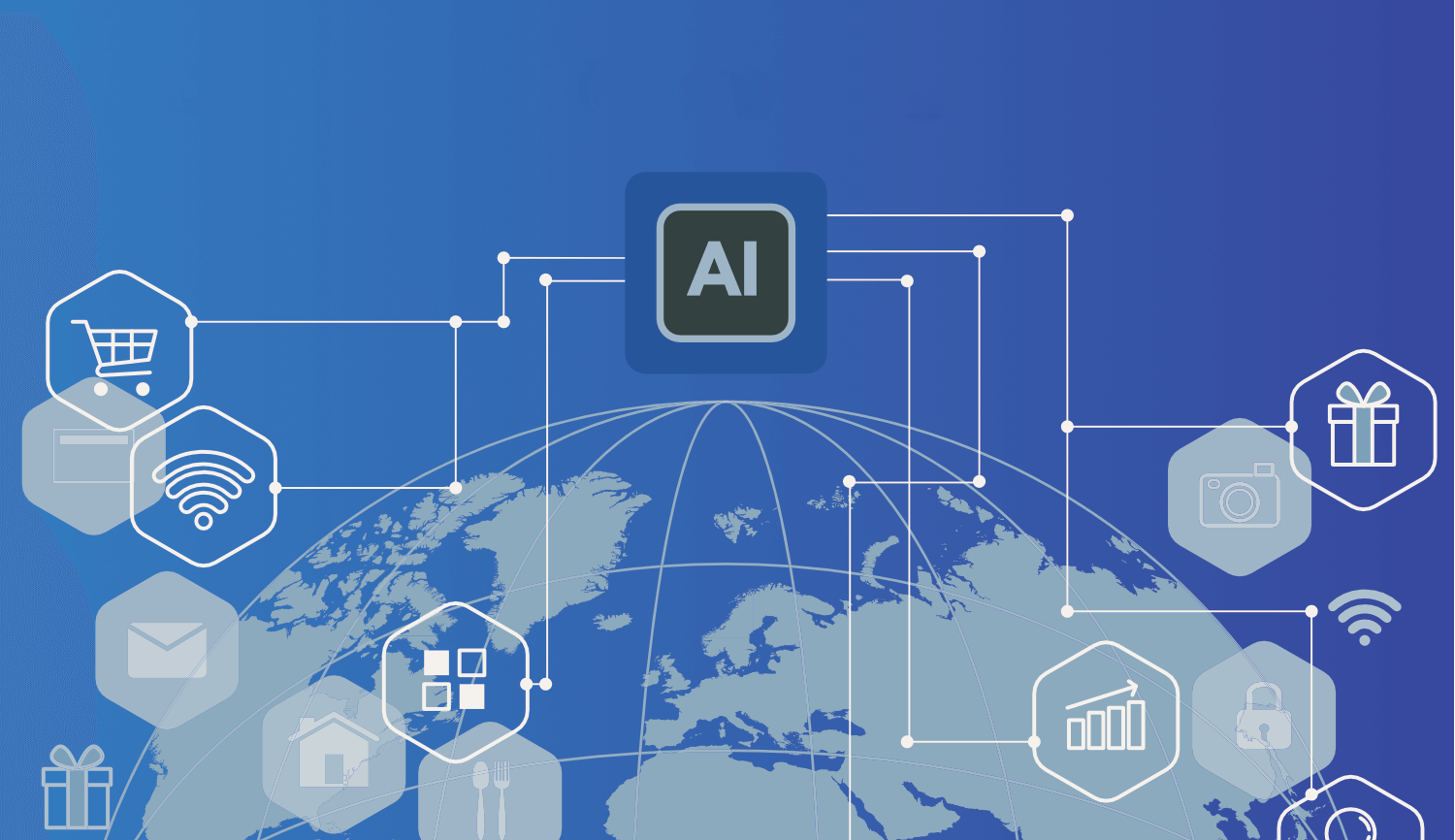Role Of Sensors In AI (Artificial Intelligence)
Just like sense organs are important in the human body, electronic sensors play a vital role in artificial intelligence. AI work programming intelligence or making computers behave like humans. AI algorithms are used to control robots. For example, AI algorithms are used in virtual assistants like Google Assistant, Amazon Alexa and Apple Siri. Without sensors, AI robots are blind, deaf and dumb.
Local Intelligence:
Sensor solutions are mostly responsible for only data acquisition. The raw-data needs to be extracted from the sensor and transmitted to another, more computationally capable device within the network. The receiving end collects the raw-data and performs pre-processing in order to present relevant results. Frequently the raw-data of the IoT device needs to be processed using artificial intelligence, for example as in speech recognition. The demand for artificial intelligence is expected to increase dramatically over the next years since sensor solutions become more complex.
In future, the tendency of processing data within the cloud will be additionally shifted back to local on-device processing. That allows more complex sensor solutions, which include sensor fusion or pattern recognition.

For that kind of applications, local intelligence of the IoT device is needed. Sensor solutions will become resourceful, as they already deliver finalized meaningful data. But, computing elaborate AI solutions within an IoT device, need new solutions which meet power, speed and size constraints. In order to archive this, the trend is shifting to integrated circuits optimized for machine learning. This type of processing is commonly mentioned as edge AI.
Constraints:
In sensors, the most prominent constraint is power consumption.This leads to a system design, which minimizes the amount of data to be transferred via a communication channel as sending and receiving data.

Local processing neural networks are a best option as their power consumption can be well controlled. First, the right architecture (recurrent versus non-recurrent) and the right topology (number of layers and neurons per layer) must be chosen. This is far from trivial and requires experience in the field. Second, the bit-resolution of the weights get important. Whether a standard float type is used or whether someone can find an optimized solution using just 4 bits per weight contributes significantly to memory size and therefore to power consumption.
Test case for AI in sensors: Gas Sensor
The sensor system, as a test case for AI in sensors, is a Metal-oxide (MOX) based gas sensor. The sensor based on the principle of a chemiresistor[Kor]. Under some certain possible set of reduce (e.g. CO, H2, CH4) and/or oxidize (e.g. O3, NOx, Cl2) gases the detector layer change its resistivity. This can in turn be detected via a metal electrode sitting underneath the detector layer. The main problem of such a configuration is the indiscriminate response to all sorts of gases. Therefore, the sensor is thermally cycled (through a micro hotplate). This causes the sensor to react with a resistance change with an isolated signature and thus significantly rise the selectivity of gas detection.
Another approach is to combine different MOX sensor layers to discriminate further between the different gas types.
A closed physical model explains the behaviour of chemiresistors would depend on too many parameters. Together with the thermal cycling profile, the model would be too complex and is currently simply not available.
Deployment of Sensor in AI:
 AI has grabbed the center stage of business intelligence, despite having been around for decades, due to the growing pervasiveness of data, the scalability of cloud computing, the availability of AI accelerators. IDC envisage that by 2019, 40% of DX initiatives will use AI services; by 2021, 75% of commercial enterprise apps will use AI, over 90% of consumers will interact with customer support bots, and more than 50% of new industrial robots will leverage AI.
AI has grabbed the center stage of business intelligence, despite having been around for decades, due to the growing pervasiveness of data, the scalability of cloud computing, the availability of AI accelerators. IDC envisage that by 2019, 40% of DX initiatives will use AI services; by 2021, 75% of commercial enterprise apps will use AI, over 90% of consumers will interact with customer support bots, and more than 50% of new industrial robots will leverage AI.
According to a report on the automotive sensors market published by Progressive Markets, the market was valued at $20,458 million in 2014, and is likely to grow at a CAGR of 5.36% during 2018–2025.
Systems where AI with Sensor could be relevant
This section is an overview of possible future sensor solutions. Generally it can be assumed, that reading raw-data from sensors will not be sufficient anymore, since the complexity and capability of sensors themselves is increasing.
 The raw-data needs to be heavily computed and/or combined with the raw data of other sensors to deliver a meaningful result. This method is called sensor fusion. Often, all sensors required for the task, are already included in one solution including an embedded system. Using AI, sensor fusion can be done easier and more accurately than with classical algorithms. Neural networks can cope with unknown situations much better. In addition, it can detect compensation techniques given the training data and potentially increases the value of the delivered result to the customer. For example, where the usage of AI is the state-of-the-art solution is object recognition within a camera image.
The raw-data needs to be heavily computed and/or combined with the raw data of other sensors to deliver a meaningful result. This method is called sensor fusion. Often, all sensors required for the task, are already included in one solution including an embedded system. Using AI, sensor fusion can be done easier and more accurately than with classical algorithms. Neural networks can cope with unknown situations much better. In addition, it can detect compensation techniques given the training data and potentially increases the value of the delivered result to the customer. For example, where the usage of AI is the state-of-the-art solution is object recognition within a camera image.
This area has massive potential within the sensor industry. In addition, facial recognition in embedded devices and smart phones are a trending topic. Here, the facial recognition could be directly performed inside the IoT device, creating a plug-and-play solution for customers.
Another area are sensor hubs, which are IoT devices collecting information of supplemental sensors and cameras within the network. Using AI, these devices are capable of identifying patterns, routines and make pro-active steps in stand of the customer.

Privacy and Data Protection:
Any data, which is stored as a standard firmware on a micro controller in a sensor node, must be regarded as public. Generally, the algorithm to infer meaningful information from sensor raw data is an important asset of sensor providers.
“AI powered sensors are the future.”
Artificial intelligence (AI), machine learning, water quality management, and sensors represents an example of one of those initial steps towards a smart technology driven sustainable society where data obtain by sensors assists AI make human-like decisions or human-like operations.
AI, quantum sensors, and will quantum computing transform the way we live and will play an integral role in achieving sustainability and a sustainable world.
Summary & Conclusions
This article has shown the increasing importance of AI within sensors systems. Why AI has a strong potential for sensor solutions in the future and it was established using the example of gas sensing applications. At last, possible future applications were discussed.
The importance of privacy still protection of the data is very important and can’t be ignored in future systems. At Epsilon Electronics, we believe that AI can leave a mind-blowing impact if everybody can use it, thus we’re making our solutions scalable as well as robust. For more information you can visit our website www.epsilonelectronics.in or for get more AI services you can mail us on info@epsilonelectronics.in

